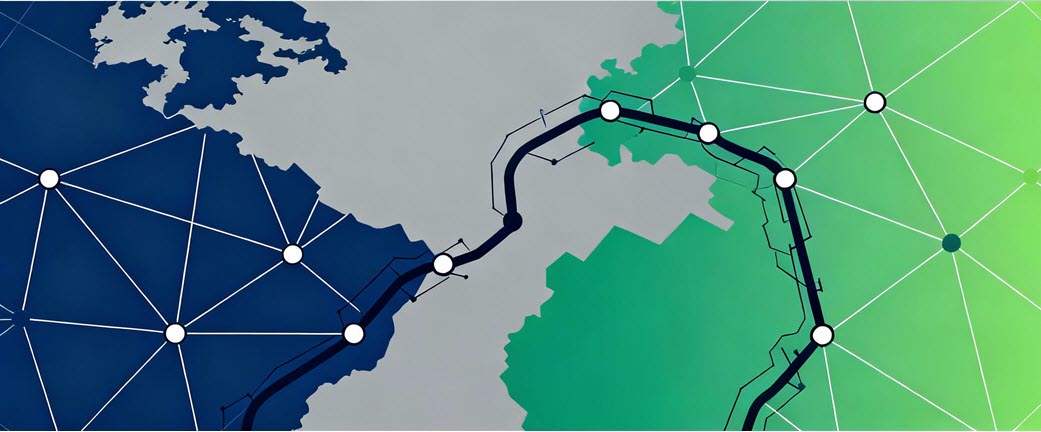
I've watched supply chain strategy swing like a pendulum over the past five years.
First, it was all about cost. Companies chased the lowest price, stretched supply lines across oceans, and celebrated razor-thin margins.
Then COVID hit. Suddenly, resilience became the only thing that mattered. Companies stockpiled inventory, diversified suppliers at any cost, and accepted that protection came with a price tag.
Now we're entering a third phase. The question isn't cost or resilience anymore.
It's both.
Four Forces Reshaping Global Supply Chains
The transformation happening right now isn't driven by theory. It's driven by reality.
Economic statecraft is back. The US imposed a 145% tariff on Chinese goods in 2025. China responded with 125%. These aren't negotiating tactics. They're structural changes that force companies to completely rethink where they source and manufacture. Nearly 80% of toys sold in the US come from China. That dependency just became a liability.
Climate risk is hitting manufacturing hubs. China is home to 14 of the 15 global regions most vulnerable to climate change. Jiangsu province alone accounts for 10% of China's GDP and ranks as the world's most vulnerable territory to climate disasters. Four Asian countries critical to fashion manufacturing could see export earnings drop by $65.6 billion by 2030 due to heat stress and flooding.
Talent shortages are limiting nearshoring benefits. Moving production closer to home sounds good until you hit reality. In Mexico, 76% of automotive employers struggle to find qualified talent. Professionals lack industry expertise, soft skills in strategic planning, and language capabilities. Nearshoring isn't a simple solution when you can't staff the operations.
Automation is changing the math. Advanced robotics adoption increased 47% in the US and 26% in China from 2020 to 2022. This shift changes where it makes sense to manufacture and how much labor costs matter in location decisions.
What Companies Are Actually Doing
The data shows companies aren't waiting for perfect answers. They're adapting now.
Across businesses surveyed, 43.8% have already cut operating costs and 38.5% diversified suppliers in response to tariff pressures. More telling: 70.4% view tariffs as an opportunity to support local economies, and 40.7% say tariffs have enhanced their supply chain resilience.
There's been a 14% year-over-year increase in companies building strategic inventory buffers. They're selectively increasing safety stock for critical components while maintaining lean practices elsewhere.
But this shift comes with real costs. OECD modeling shows that efforts to relocalize supply chains could decrease global trade by over 18% and reduce global real GDP by more than 5%. Price increases from tariffs on Mexico, Canada, and China could lower Americans' disposable income by an average of 1% in 2026.
The stakes are high. With rising tariffs threatening 20-30% of manufacturing companies' EBIT margins, finding the balance between cost and resilience isn't optional.
The New Playbook: Strategies That Work
Companies that are navigating this successfully share common approaches.
Regional supply chains replace global ones. Instead of sourcing from the cheapest location worldwide, companies are building regional networks. This reduces transportation costs, shortens lead times, and limits exposure to trade disruptions. The trade-off is accepting slightly higher unit costs for significantly lower risk.
Redundancy becomes strategic. The old model relied on single suppliers for efficiency. The new model includes backup suppliers and dual sourcing for critical components. Yes, it costs more to maintain relationships with multiple suppliers. But when one goes down, you keep running.
Supply chain brokers add flexibility. Third-party logistics providers and supply chain brokers help companies access capacity without long-term commitments. This creates flexibility to shift volumes based on changing conditions.
Joint ventures and contract manufacturing spread costs. Instead of building everything in-house, companies are pursuing partnerships that allow them to achieve economies of scale while sharing the investment burden.
Take Peloton as a cautionary tale. The company relied on a single overseas manufacturing partner, Rexon Industrial Corp. When the 2020 pandemic hit, delivery delays exposed the vulnerability of this approach. Peloton operated at what supply chain experts call "Level 1 Ad Hoc risk maturity." They lacked formal risk governance and didn't leverage technology for risk monitoring.
The lesson: efficiency without resilience is fragility.
Six Capabilities You Need to Build Now
Balancing cost and resilience requires new organizational capabilities.
Complete supply chain transparency. You can't manage risks you can't see. Map your suppliers, their suppliers, and the critical dependencies in your network. This visibility lets you spot vulnerabilities before they become crises.
Next-generation risk management. Move beyond reactive firefighting. Establish cross-functional steering committees that align risk management with business objectives. Make risk assessment a regular part of strategic planning.
Automation-integrated network design. Factor automation capabilities into your location decisions. A highly automated facility in a higher-cost location can compete with manual operations in low-cost regions.
Climate risk assessment in supply chain scorecards. Add climate vulnerability to your supplier evaluation criteria. A supplier with great pricing in a flood-prone region carries hidden costs.
Strategic workforce planning. If you're moving production, start building talent pipelines early. Partner with local educational institutions and invest in training programs. Talent development takes time.
KPIs that measure total value. Stop evaluating procurement purely on cost savings. Add metrics for supply chain resilience, lead time variability, and supplier financial health. What you measure shapes what you optimize.
The Reality Check
I won't pretend this is easy.
In the National Association of Manufacturers 2025 first-quarter outlook survey, 73% of respondents cited trade uncertainties as their top business challenge, up from 56% in the previous quarter. A separate survey found 72% of Chief Supply Chain Officers identify financial pressures as their primary challenge.
The pressure is real. The uncertainty is real.
But here's what I've learned: companies that master the balance between cost and resilience don't just survive volatility. They gain market share while competitors scramble.
The old playbook of chasing the lowest cost is dead. The brief experiment with resilience at any cost is ending.
What's emerging is something more sophisticated. Companies are learning to combine cost-efficiency with adaptive capacity. They're building supply chains that can flex without breaking and compete without bleeding cash.
This isn't about choosing between cost and resilience anymore.
It's about building both into your DNA.
The companies that figure this out first will define the next decade of global business. The ones that don't will spend that decade explaining why they couldn't keep up.




